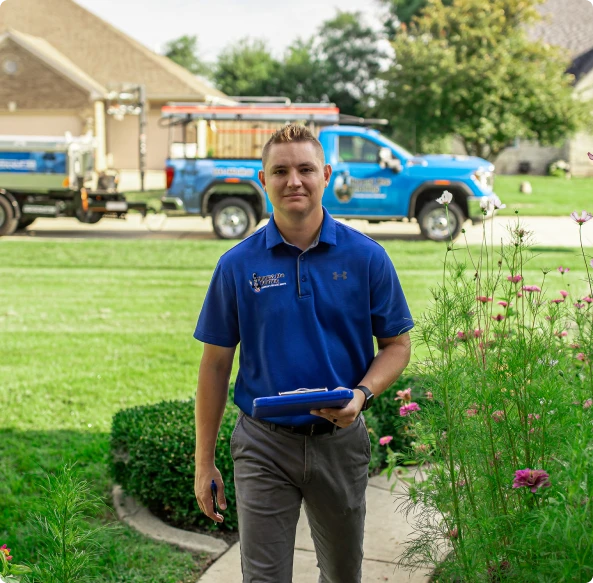Oh, Hail No!
Oh, Hail No!
Storms can be scary, especially for a roof. Thankfully, homeowners can do a lot to prepare for a storm and keep their roof protected. Cutting back precarious trees, securing yard furniture, and keeping gutters cleared of debris are great ways to help minimize potential damages to your roof during storm season.
Unfortunately, not all dangers to your roof can be so easily prevented. Sometimes the danger comes from above, as with hail, and -short of fitting your house with a giant shield- chances are you’re going to have to deal with hail damage to your roof during your lifetime.
Whenever that time does come, however, there’s no need to fret. You can identify hail damage to your roof, deal with your insurance company for hail damage claims, and you can take steps to protect your home in the future. You can do this all with minimal hassle and stress!
After the Storm
Hail, also called “hailstones,” occurs when drops of water freeze together in the cold upper regions during a thunderstorm. They can come in various diameters, but essentially they are frozen and lumpy balls of ice. Depending on the size of the hailstone, damages can range from minor dings to major destruction. It’s important to stay on top of any hail damage to your roof in order to prevent further expensive issues down the line.
There are three major types of hail damage that can affect your roof, and it’s important to know which type of hail damage your roof has sustained in order to get it fixed correctly. If your house has gone through a hail storm, it’s a good idea to get up on your roof to check for these damages.
- Bruising: You might have to look closely to see dents caused by hail. They are not always completely visible, so run your hand over the shingle to feel for any dimples on its surface. If you find one, press it to see if gives way at all. If the dimple gives way, you can be sure your shingles have experienced some deterioration.
- Cracking: It’s much easier to identify cracking on your roof and shingles caused by hail. Large hail can easily leave a circular crack if it hits your roof hard enough. Check your shingles and gutters for any hard hits from hail.
- Missing Granules: When you’re checking your roof, look for areas where the substrate materials have become exposed. If you can see the substrate, you can be assured that granules of the asphalt –or even entire shingles- have been compromised by the hail damage.
It’s also a good idea to check the ridge cap of the roof for any dents or damages. Because this area of the roof is flat, it will take more direct hits during a storm which can cause most of the damage.
When in doubt, or if you’re unable to get on your roof safely, hire a roofing contractor or inspector to come check your roof.
Dealing with Insurance
You may not have any leaks caused by hail damage to your roof, but that doesn’t mean you’re in the clear. Don’t wait for a leak before you file a claim with your insurance company. It’s always best to get hail damage fixed before there are additional and costly problems.
You’ll want to schedule an adjuster to come out sooner than later. Too many homeowners choose to take a quick glance at their roof after a hailstorm, decide there’s no significant damage, and avoid making a claim. Months later, when the damages cause water leaks and other issues, it might be too late to file a roof claim successfully.
When dealing with your insurance company, it’s a good idea to have as much information as possible. If your home recently sustained hail damage, you’re going to want to keep track of a few things:
- Try to determine the exact date and time of the storm-caused damage to your roof.
- Document damage with photos of your home, particularly the areas that have sustained damage.
- If you can, take photos of the hailstones that have hit your home, have a ruler or other measuring instrument next to the hail in order to provide proof of size.
Preparing for Future Storms
Because it is the nature of hail to fall from the sky, it is difficult to protect your home against it. However, there are certain types of roofing materials that hold up better against hail damage than others. If you’re updating your roof before the hail damage strikes, or if you’re simply redoing your roof because it’s reached that age, it’s a good idea to invest in impact-resistant roofing materials. They pay for themselves in the long run.
The rubber-like qualities of modified asphalt shingles make this affordable and weather-resistant material a favorite among forward-thinking homeowners. Higher cost shingles, such as those made of plastic, aluminum, resin, or copper can offer even more protection. Getting quotes on various types of shingle materials can help you make the best choice for yourself.
If you are upgrading your roof, it doesn’t hurt to talk to your insurance company to see what incentives or discounts they offer for some of the more weather-resistant materials.
Hail Happens
Your roof is the primary protector of your home, and it’s important to keep an eye out for damages and issues that arise. Hail is a big problem for many homeowners, but there are steps to take when dealing with hail damage to your roof that will help you in the long run. Preparation is as integral, but taking quick action after a hail storm is equally important to keeping your roof in good condition during storm season!
At Honest Abe Roofing we do not charge to evaluate your hail and storm damaged property. Don’t struggle through the claims process alone. Call Honest Abe Roofing today!
